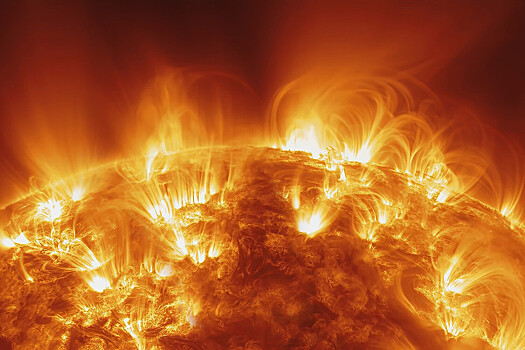The closest planet to the Sun, Mercury, was in the path of a coronal mass ejection (CME) – a cloud of stellar plasma that turned out to be about 40 times wider than Earth. Solar material caused X-ray polar auroras, reports the portal Spaceweather.com.

The eruption was caused by a powerful solar flare that occurred on March 9. According to NASA’s Solar Dynamics Observatory estimates, the eruption zone reached a diameter of 500,000 kilometers.
Mercury often falls under CMEs due to its proximity to our star. As a result, it has no atmosphere left. When electrons from the ejection reach the planet’s surface, they slow down rapidly. This slowing down causes particles to release energy in the form of X-rays, which can be detected from Earth. The result is a phenomenon similar to the Northern Lights, but it can only be seen with a radio telescope.
Another giant eruption on the Sun serves as a sign that the peak of the Sun’s 11-year solar cycle, known as the solar maximum, may have already begun – much earlier than originally predicted.
During the solar maximum, solar flares and other types of solar storms occur more frequently and intensely, as the Sun’s magnetic field weakens and eventually flips. Scientists are already seeing signs that this is happening.
Over the past month, researchers have observed some of the largest solar storms of the current cycle, including a monstrous X-class flare – the most powerful in the last six years – as well as a plasma trail 15 times wider than Earth, which erupted at the Sun’s south pole.


